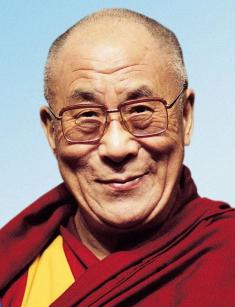
Dalai Lama: biography
Since ancient times every nation required a strong spiritual advisor. In Russia, there were monasterial starets who distinguished themselves by a humble life, the power of faith, which was capable of manifesting miracles, and acquired wisdom. The real story gave us an example: a spiritual leader of medieval Russia Sergius of Radonezh blessed Dmitry Donskoy when he went to fight the Tatars in the signal Battle of Kulikovo field; and Fyodor Dostoevsky went into detail describing the philosophical and religious arguments by Father Zosima, the favorite teacher of Alexei Karamazov, in the writer’s work The Brothers Karamazov. Therefore, Dalai Lama is responsible for the moral values and deep religiosity of Tibetan Buddhists.
Origin of the title of 'Dalai Lama' and its related backgrounder
The history of spiritual leader’s title rooted back to 1578 when Altan Khan designated Sonam Gyatso as “Dalai” (a translation into Mongolian of the name Gyatso, meaning “ocean”). As a result, Sonam Gyatso became known as the Dalai Lama, which, since then, had been used as a title – frequently translated into English as "Ocean of Wisdom."
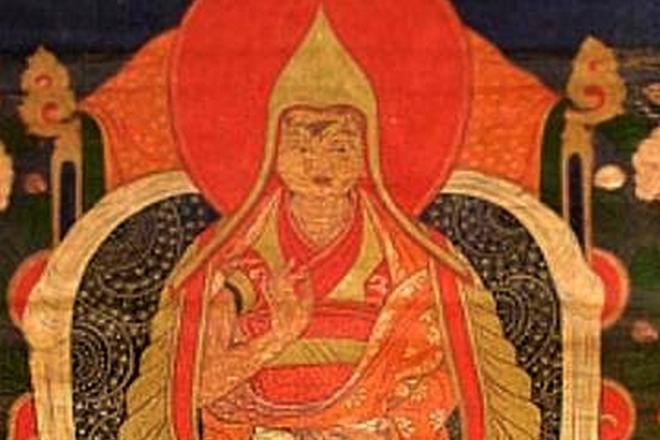
The whole title means the Great Master who gets the highest achievements in both Buddhism, going beyond the mortal world and having the knowledge as extensive as an ocean. This honorific title was sent personally between the representative figures of Mongolians and Tibetans, having no political or legal significance.
The title was also posthumously given to Gendun Drup and Gendun Gyatso, who was considered Sonam Gyatso's previous incarnations. Thus, Sonam Gyatso was recognized as being already the third Dalai Lama. According to the teachings, after the death of Dalai Lama the consciousness takes at least 49 days to travel from one life to the next. Prayers conducted by the living can assist the dead through this journey and can help to guide them toward a good rebirth, and so it is a period that is always marked by special rites. Generally, groups of monks come to the house of the deceased and conduct elaborate prayer ceremonies that often last all day. Following the Buddhist belief in the principle of reincarnation, the current Dalai Lama is believed to be able to choose the body into which he is reincarnated. That person, when found, will then become the next Dalai Lama. According to Buddhist scholars, it is the responsibility of the High Lamas of the Gelgupa tradition and the Tibetan government to seek out and find the next Dalai Lama following the death of the incumbent.

The process can take a long time. To help in the search, the High Lamas may have visions or dreams, and try to find signs. When these signs have been interpreted, and a successor found, there are a series of tests to ensure that they are the genuine reincarnation of the previous Dalai Lama. They assess the candidate against a set of criteria and will present the child with various objects to see if they can identify those, which belonged to the previous Dalai Lama. If a single candidate has been identified, the High Lamas will report their findings to eminent individuals and then to the Government. If more than one candidate is detected, the true successor is found by officials and monks with a lot-drawing process using Golden Urn in a public ceremony.
Once identified, the successful candidate and his family are taken to Potala Palace in Lhasa (the capital of Tibet) where the child will study the Buddhist scriptures in order to prepare for spiritual leadership under the care and protection of wise teachers. Upon reaching adulthood and having refused the regent status, he becomes the full authority. It is also known that the enforcement powers of the religious leader also include running a nation, except two dates, which differ from precisely one decade - 1949 and 1959.
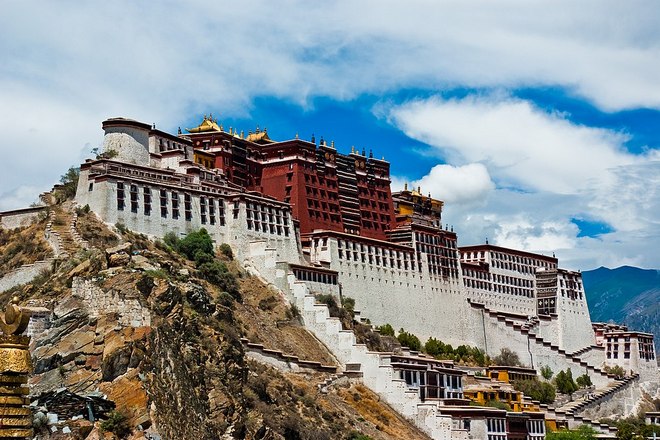
If to give an abbreviated answer on a burning question “how to become a Dalai Lama?”, it will be like this: “You need to be born in the right time and right place."
Nevertheless, in the autumn of 2018, the head of Tibetan Buddhists declared that he intended to change the rule for choosing a successor that had been in effect for more than 600 years: they do not have to be a child, it can be “a respected lama or a religious scholar”, and the male youth is allowed to pretend to a title only upon the attainment of the age of 20. A year earlier, he also suggested that a female representative could well be eligible for the place of the Holiness.
Dalai Lama previous materializations
By 2019, there were 14 Dalai Lamas in the history of Tibetan Buddhism. Since the omniscient Gedun Gyatso was recognized and confirmed as the reincarnation of Gendun Drub in the fifteenth century and the Ganden Phodrang Labrang (the Dalai Lama’s institution) was established, successive reincarnations have been recognized. The third in the line, Sonam Gyatso, was given the title of the Dalai Lama. Of course, each of the spiritual leaders made an invaluable contribution to the development of his nation, but only some were considered the most outstanding of them.

The Fourth Dalai Lama, Yonten Gyatso, should be mentioned first. He was a Mongolian, who was a descendant of Kublai Khan and King of the Tümed Mongols. This secure connection caused the Mongols to vigorously support the Gelugpa sect in Tibet, strengthening their status and position.
The Fifth Dalai Lama opens the list of prominent lamas with good reason. Ngawang Lobsang Gyatso (the V) was referred to only as the Great Fifth, who was famous for his peaceful disposition. He managed to establish the Ganden Phodrang Government in 1642, unifying all Tibet after a Mongol military intervention and became the spiritual and political head of Tibet. With the participation of genuine masters of arts, Gyatso also began construction of the Potala Palace in 1645 and put in a specific order religious literature.
The importance of this personality was so significant that the death of the Fifth Dalai Lama was kept hidden for 15 years. People were told that the Great Fifth was continuing his long retreat. Meals were taken to his chamber, and on important occasions, an old monk called Depa Deyab of Namgyal monastery, who resembled the Dalai Lama was hired to pose in his place.
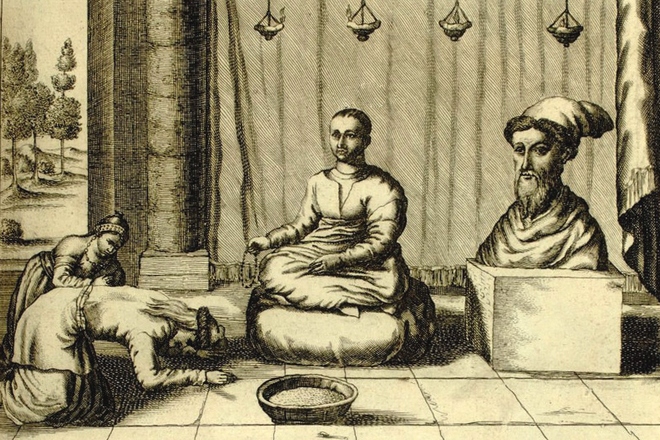
Then, a young Tsangyang Gyatso possessing the poetic gift became the 6th Dalai Lama who was far from ascetic life and did not keep from vital pleasures, in particular, long and voluminous hair, modern and silk clothes, archery and, especially, amusement lifestyle in the company of wine and women.
There was a peculiar intimate fact in his biography – Tsangyang was proud of letting a playboy way of life. All Tibetans were proud of him in return. Unfortunately, he did not manage to live a long life - the lama, who had barely reached 23, disappeared near Qinghai, possibly murdered, on his way to Beijing in 1706.

The 7th Dalai Lama was Kelzang Gyatso who was famous for his genuine spiritual recognition and respect rather than being politically motivated (however, he regained power at the end of his life). He also allowed representatives of Catholicism to his own territory and granted them freedom of worship and proselytism. Kelzang’s eight written moral works comprising several hundred titles included some of Tibet's most exceptional spiritual, literary achievements.
One legend is associated with the Eighth Dalai Lama, Jamphel Gyatso. When he was conceived, the village was given a significant harvest with each stalk of barley bearing three, four and five years, which has never been seen before throughout Tibet. When Jamphel's mother, Phuntosk Wangmo and a relative were having their supper in the garden, a giant rainbow appeared one end of which touched the mother's shoulder. This is a key sign associated with the birth of a holy being. The 9th Dalai Lama, Lungtok Gyatso, died before attaining his majority, but he was described as the boy who had a handsome appearance and a strong or even magnetic effect on people.
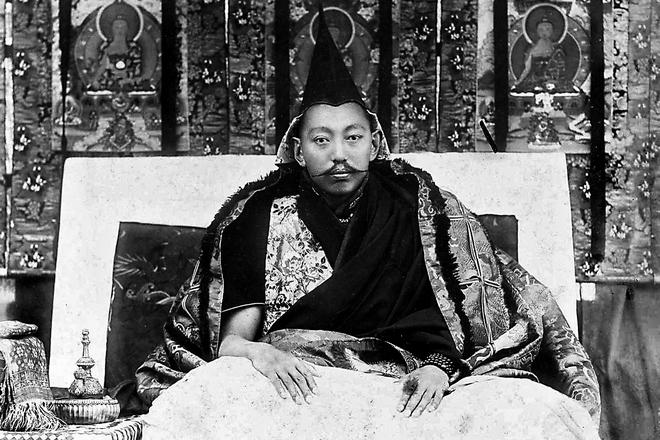
After the 9th, the next Dalai Lama was searched for a little less than ten years. It became a child from a poor family who, as he grew older, was not interested in political affairs at all. Two other gurus also crossed over relatively early - both never reached the 20th anniversary.
During the period of the short-lived Dalai Lamas - from the Ninth to the Twelfth incarnations - the 13 number appeared lucky for its owner – the 13th Dalai Lama, Thubten Gyatso. He was the lama of the hour, filling the void left by the four Dalai Lamas who died in their youth. He became well aware of the complexities of international politics and was the first Dalai Lama to become mindful of the importance of foreign relations. For example, the 13th established and enforced a national taxation system, introduced legislation to counter corruption among officials, and created the police force.
Dalai Lama now
Lhamo Thondup became the 14th Dalai Lama, born on a straw mat in a cowshed to a farmer's family in a remote part of Tibet on July 6, 1935. His family was farming and horse trading as the other people of the settlement - they grew and cultivated cereal crops as well as potatoes.
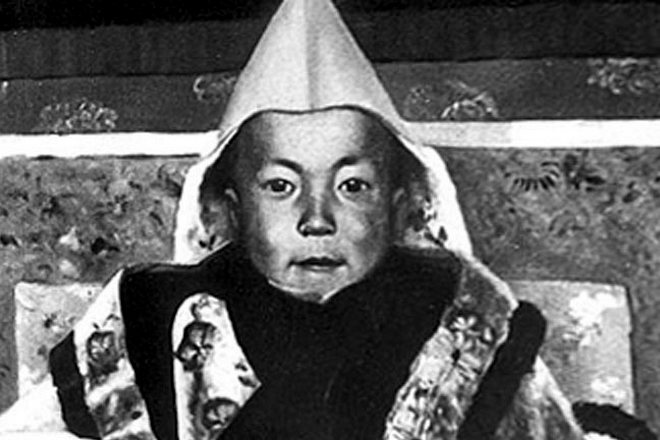
Sharing the memories about his youth from the past, Lhamo remembered his relatives tremblingly: his father, whom the boy yanked at his moustache, and his mother, a woman with the kindest heart. She gave birth to her beloved 16 children – unfortunately, seven of them died at a young age. The older sister was engaged in the house and at the right time helped birthing mothers. Two of the four brothers subsequently also became monks.
Freedom in Exile: The Autobiography of the Dalai Lama has much valuable information about early hobbies of His Holiness:
“One thing that I remember enjoying particularly as a very young boy was going into the chicken coop to collect the eggs with my mother and then staying behind. I liked to sit in the hens' nest and make clucking noises. Another favorite occupation of mine as an infant was to pack things in a bag as if I was about to go on a long journey. I'm going to Lhasa; I'm going to Lhasa, I would say. This, coupled with my insistence that I was always allowed to sit at the head of the table, was later reported to be an indication that I must have known that I was destined for greater things.”
When Lhamo Thondup was two years old, a search party that had been sent out by the Tibetan government to find the new incarnation of the Dalai Lama arrived at Kumbum monastery. It had been led there by many signs. One of these concerned the embalmed body of his predecessor, Thupten Gyatso, the Thirteenth Dalai Lama. During the mummification process, the head was discovered to have turned from facing south to the northeast. Shortly after that moment, the Regent, himself a senior lama, had a vision. Looking into the waters of the sacred lake, Lhamoi Lhatso, in southern Tibet, he saw the Tibetan letters Ah, Ka and Ma float into view. Finally, he saw a small house with a strangely shaped guttering. He was sure that the letter Ah referred to Amdo, the northeastern province, so it was there that the search party was sent. Nevertheless, rather than reveal the purpose of their visit, the group asked only to stay the night, the leader of the party observed and played with the child, who soon recognized him.
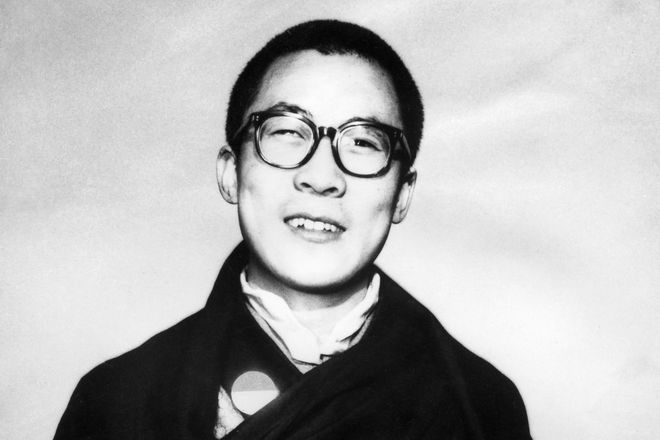
The next day they brought with them some possessions that had belonged to the Thirteenth Dalai Lama, together with several similar items that did not belong to the Thirteenth Dalai Lama. In every case, the infant correctly identified those belonging to the Thirteenth Dalai Lama saying, "It's mine. It's mine". This more or less convinced the search party that they had found the new incarnation. At the beginning of 1940, Lhamo Thondup was taken to the Potala Palace, where he was officially installed as the spiritual leader of Tibet. In accordance with ancient custom, His Holiness forfeited his name Lhamo Thondup and assumed a new name, Jamphel Ngawang Lobsang Yeshe Tenzin Gyatso.
On 17 November 1950, at the age of 15, the 14th Dalai Lama was enthroned formally as the temporal ruler of Tibet. During almost ten years he tried to evade a full-scale military takeover of Tibet by China on the one hand and placating the growing resentment among Tibetan resistance fighters against the Chinese aggressors on the other. In the end, His Holiness was exiled to India, since then, he set up the Government of Tibet in Exile in Dharamshala.
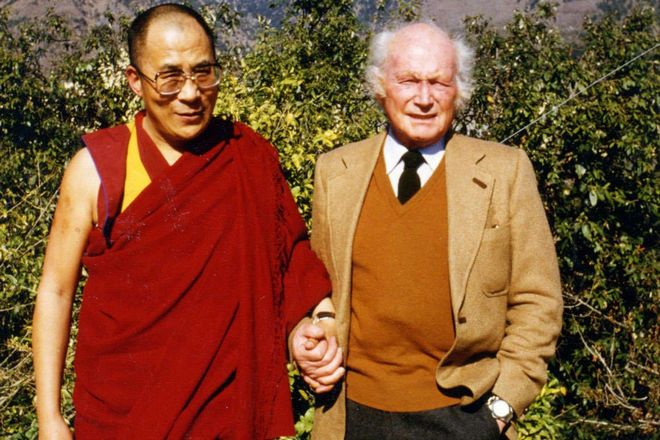
The acquaintance and communication in the youth with Heinrich Harrer became a very curious fact of lama’s biography to Chinese propagandists who often used it in the context of the confessor's relationship with the Nazis, although Dalai Lama claims that he did not hear anything about them. Harrer expounded his memoirs in the book “Seven Years in Tibet: My Life Before, During and After,” upon which the full-length film with starring Brad Pitt was later shot.
After the Tiananmen Square protests of 1989, the Norwegian Nobel Committee awarded the Dalai Lama the 1989 Nobel Peace Prize. The Committee officially gave the prize to the Dalai Lama for “the struggle of the liberation of Tibet and the efforts for a peaceful resolution” and “in part a tribute to the memory of Mahatma Gandhi." In general, if it concerns science, Dalai Lama does not mind, especially, the burning topics of the human clones or artificial intelligence creation.
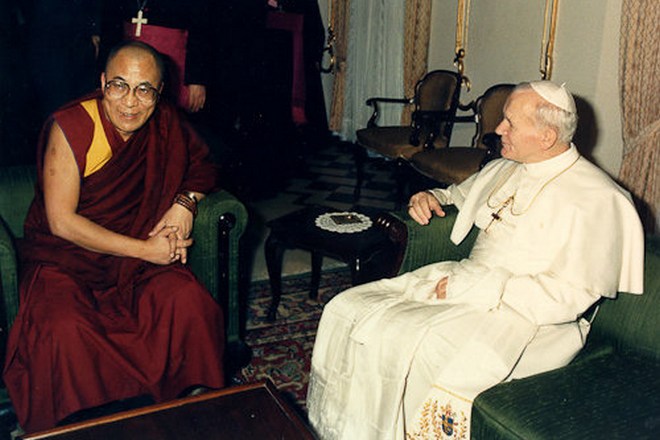
As regards the matters of state, in 2007 Lama announced his semi-retirement after having gallstone surgery, and after four years completely resigned commission. He visited Russia several times.
In September 2017, Dalai Lama visited teachings of Buddhist philosophy, which were traditionally held in Riga since 2014. During such event, there were many representatives from Russia, including the lead singer of the band Aquarium, Boris Grebenshchikov. The same year, Dalai Lama made his famous statement about the potential of the Russian Federation to become the leading nation of the world. In 2018, he again supported what was said with the following expression:
“I have always considered Russia as a leading world power. Putin is very active; he visits many countries around the world. It causes me to admire him, and I appreciate his efforts."
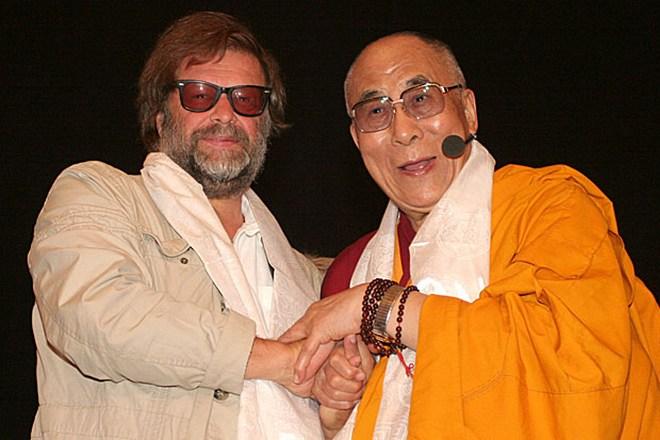
The life and activities of the Dalai Lama have repeatedly taken an artistic presentation. A devoted admirer and lover of Russian rock surely recall the well-known refrain from the song of the cult-favorite St. Petersburg Splean: “Come on, lama, come on,” which is consonant with the “Lama” title. Follow the inimitable Boris Grebenshchikov creative work, and many fans know that in 2017 the musician used the song “White Horse” as a musical gift to the Dalai Lama.
“This song is about a white horse leaving the comfort of a stable to look for freedom exactly like the soul leaves the comforts of the material world and goes in search of enlightenment, according to your teachings, " - Grebenshchikov noted.
Besides, this is not the only song about Buddhism in the discography of the legendary band, for example, “Go On, Bodhisattva!” and "Bodhisattva knives."

Being an example of spiritual enlightenment, the teacher tells his wisdom to his followers through witty aphorisms and observation getting inspired to create the exhibitions of paintings and photography. For example, the project “Portrait of the Dalai Lama” was presented in the 2018 multi-episode documentary film The meditation of the Dalai Lama.
On the official website of His Holiness, his particular activities on the 2019th and 2020th are shown: teachings, prayers, public prayers, visits, and others. All interested persons are also given the opportunity to get acquainted with the spiritual adviser’s speeches which you can hear with the help of a radio or using the live broadcast. There, in a separate section, the approximate day of the Dalai Lama is published, rare photos and valuable biography information are posted.

In February 2019, on the personal page of Instagram a Spanish publicist Alejandra Silva, the young wife of the Hollywood star Richard Gere, posted the couple’s long-awaited newborn child who received the blessing of the Dalai Lama.
In addition to this, the very word “Dalai Lama” calls and characterizes not only a specific person living under the strict laws of morality and righteousness. Nowadays, it has become the generic name for everyone who quietly stays in “the boiling stream of life," contemplates the world, is capable of almost unlimited love for those around you, and especially for fellow-beings, comprehending the ability to be happy.
Books
- 1952 – Heinrich Harrer. Seven Years in Tibet: My Life Before, During and After
- 2012 – Christopher Buckley. They Eat Puppies, Don't They?
- 2015 – David Michie. The Dalai Lama's Cat
Movies
- 1994 – I am a Buddhist monk (Russian)
- 1997 – Seven Years in Tibet
- 1997 – Kundun
- 2006 – 10 Questions for the Dalai Lama
- 2007 – Dalai Lama Renaissance
- 2008 – Sunrise/Sunset. XIV Dalai Lama
- 2010 – The Buddha
- 2016 – The Last Dalai Lama?
- 2018 – Why Are We Creative: The Centipede's Dilemma
Misuc
- 1997 – Splean. English-Russian dictionary (Russian)
- 2004 – Rammstein. Dalai Lama.
- 2013 – Anton Shulga. Dalai Lama wants to go home (Russian)




